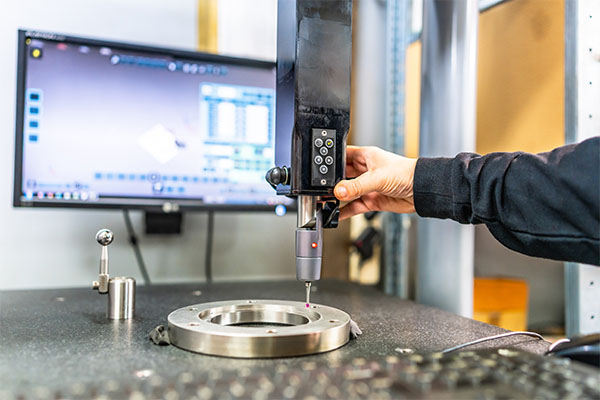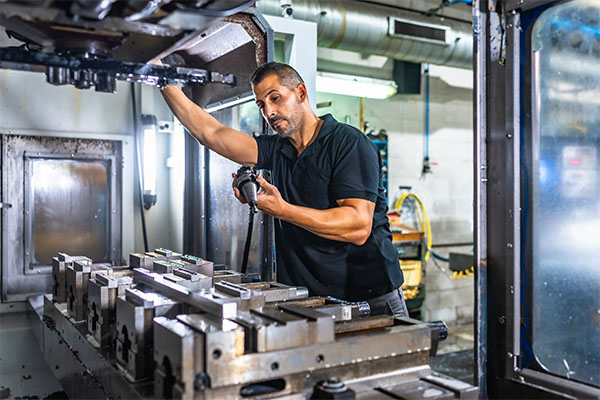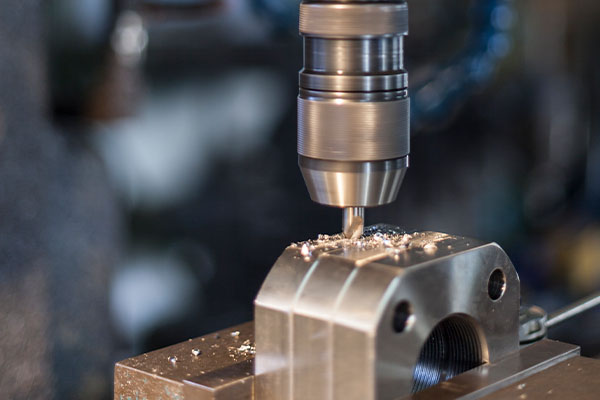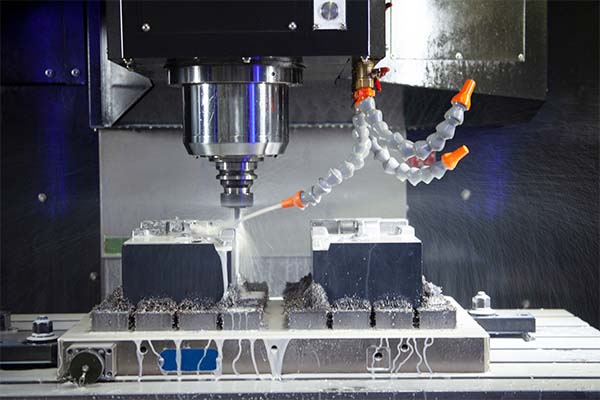Введение
CNC machining is an invaluable skill in today’s manufacturing world, especially for those in industries such as automotive, aerospace, and medical devices. But for someone just starting, it might feel like a complex puzzle. Whether you want to pursue it as a hobby or as part of your career, understanding CNC machining takes time, dedication, and hands-on practice. In this step-by-step guide, we will break down everything you need to know about learning CNC machining, from the basic concepts to advanced techniques, and how you can get started today.

1. What is CNC Machining?
Definition and Overview of CNC Machining
CNC machining stands for Computer Numerical Control machining. In simple terms, it’s a process that uses computers to control machine tools such as drills, lathes, and mills. These machines follow coded instructions (G-code) that tell them how to move, cut, and shape materials like metal, plastic, or wood into parts with precise dimensions.
Why CNC Machining is Important in Modern Manufacturing
CNC machining is essential in modern manufacturing because it allows for a high level of precision, repeatability, and efficiency. Whether you’re producing hundreds or thousands of parts, CNC machines ensure that each piece is identical to the next, meeting strict quality standards. Additionally, CNC machines reduce the risk of human error, increase productivity, and help manufacturers meet tight deadlines, making them invaluable in many industries, from aerospace to automotive.
2. Types of CNC Machines and Their Functions
Фрезерные станки с ЧПУ
Milling machines are some of the most common types of CNC machines used in manufacturing. They use rotating cutters to remove material from a workpiece, creating parts with complex shapes. Milling machines are versatile, capable of making holes, slots, or intricate designs in materials such as metals or plastics. These machines come with multiple axes of movement, allowing for precision in creating both 2D and 3D shapes.
Токарные станки с ЧПУ
A CNC lathe is used to shape parts by rotating the material against a cutting tool. Unlike milling, which involves rotating cutters, lathes focus on turning a workpiece to create symmetrical, round parts, like gears or shafts. CNC lathes are commonly used for parts that need high surface finish quality and accurate diameters.
Фрезерные станки с ЧПУ
CNC routers are machines designed to cut large sheets of material, such as wood, plastics, and composites. They are typically used in industries like furniture manufacturing and sign-making, where large pieces need intricate detailing. These machines work similarly to CNC milling machines but are primarily designed to handle softer materials.
Other Types (3D Printers, EDM, etc.)
There are also other types of CNC machines, such as 3D printers and Electrical Discharge Machines (EDM), which are used for specific applications. 3D printers use additive manufacturing to build parts layer by layer, while EDM is used for creating extremely precise parts through electrical discharge between electrodes. These machines extend the range of manufacturing possibilities, offering unique solutions to complex problems.
3. Key Concepts and Terms You Need to Know
G-code and M-code
G-code is the programming language used to control CNC machines. It contains the instructions for machine movements, speed, tool changes, and more. Each line of code represents a command that directs the machine’s movements, making G-code essential for successful machining. M-code, on the other hand, deals with machine functions like turning the spindle on or off and other machine operations.
Tooling and Tool Change Mechanisms
CNC machines require various tools to perform tasks such as cutting, drilling, or grinding. Tooling refers to the specific tools used for these operations, including drills, end mills, and lathes. Many CNC machines are equipped with automatic tool changers that allow them to switch between different tools quickly and efficiently during the machining process, reducing downtime and improving productivity.
Feed Rate and Spindle Speed
Feed rate refers to the speed at which the machine’s tool moves through the material, while spindle speed controls the rotation of the cutting tool. Both parameters must be adjusted carefully to ensure that the machining process is efficient and produces high-quality results. For example, using too high a spindle speed with a low feed rate can lead to excessive heat, which may damage the material or tool.
Workholding Methods
Workholding refers to the techniques used to secure the material being machined. Common methods include clamps, vises, and fixtures, which hold the material in place during the machining process. The right workholding method ensures that the material remains stable, allowing for precise cuts and minimizing the risk of errors.
4. Necessary Skills and Knowledge for CNC Machining
Mathematics and Geometry Basics
CNC machining requires a solid understanding of mathematics, especially geometry and algebra. Understanding measurements, angles, and dimensions is crucial to creating accurate parts. Knowledge of how different materials behave under stress or heat can also play a significant role in determining cutting speeds and other parameters.
Blueprint Reading
In CNC machining, understanding blueprints and technical drawings is vital. These drawings provide detailed instructions on how to machine the part, including dimensions, tolerances, and finishes. Reading blueprints accurately ensures that the final product meets the required specifications, making this skill essential for every machinist.
Mechanical Aptitude
A good machinist must have mechanical aptitude, meaning the ability to understand how machines work and how parts fit together. Mechanical aptitude allows machinists to troubleshoot issues like misalignments or machine malfunctions, which can occur during the machining process.
Computer Skills
CNC machining heavily relies on computer software for programming and controlling machines. Basic computer skills are necessary to work with CAD/CAM software and to navigate the machine’s control panel. The ability to interpret and adjust computer-generated instructions is a critical part of the CNC machining process.

5. Understanding CNC Programming
What is CNC Programming?
CNC programming involves writing and editing the G-code and M-code that tells the machine what to do. This step requires precision, as even a small mistake in programming can result in errors or defects in the machined parts. CNC programmers must understand how to translate technical drawings into machine commands, and it often involves working with specialized software like AutoCAD or Mastercam.
Introduction to G-code Programming
G-code programming is the backbone of CNC machining. It’s essential to understand how to write, read, and modify G-code to ensure that the machine performs as expected. Common G-code commands include G0 (rapid positioning), G1 (linear interpolation), and G2/G3 (circular interpolation). Understanding these commands allows programmers to create complex machining operations.
CAD/CAM Software
CAD (Computer-Aided Design) and CAM (Computer-Aided Manufacturing) software are used to design parts and create the instructions for CNC machines. CAD software allows machinists to create 2D or 3D models of the parts they want to produce, while CAM software generates the G-code to control the CNC machine. Popular CAD/CAM programs include AutoCAD, SolidWorks, and Fusion 360.
6. Where to Learn CNC Machining: Options and Resources
Technical Colleges and Universities
Many technical colleges and universities offer programs specifically focused on CNC machining. These programs often combine hands-on experience with theoretical learning, giving students a comprehensive understanding of the field. Enrolling in a formal education program provides a structured way to learn, with access to expert instructors and modern equipment.
Online CNC Courses
Online courses are an excellent way for beginners to learn CNC machining. Platforms like Udemy and Coursera offer courses that cover everything from basic programming to advanced machining techniques. These courses allow you to learn at your own pace and can be a more affordable option for those who can’t attend a traditional program.
Apprenticeships and On-the-Job Training
For those who prefer learning by doing, apprenticeships and on-the-job training are valuable options. Working alongside experienced machinists provides practical experience and exposes you to real-world challenges. This is especially beneficial for those who want to build their skills quickly in a professional environment.
Self-Taught Methods
Learning CNC machining independently is possible, but it requires dedication and persistence. There are numerous resources available online, from video tutorials to forums where machinists share their experiences. While self-teaching may take longer than formal education, it allows for flexibility and can be a good option for those who are highly motivated.
7. Getting Started: Setting Up Your CNC Machine
Choosing the Right CNC Machine for Beginners
For beginners, selecting the right CNC machine is crucial. It’s important to consider factors such as the type of material you want to work with, the machine’s capabilities (number of axes, speed, etc.), and your budget. Entry-level machines like desktop CNC routers are affordable options for hobbyists, while larger CNC mills are better suited for industrial applications.
Setting Up the Machine
Setting up a CNC machine involves configuring the workholding setup, loading the tool, and entering the program. Proper calibration is essential to ensure that the machine operates accurately. Beginners should carefully follow the manufacturer’s setup instructions to avoid mistakes.
Safety Precautions
CNC machines can be dangerous if not used properly. Always wear protective gear, such as safety glasses and hearing protection. It’s also important to ensure that the machine is properly maintained and that safety protocols are followed to prevent accidents.
8. CNC Machining Tools: What You Need to Know
Common CNC Tools and Their Functions
CNC machining requires various tools, including drills, lathes, and end mills, each serving a different function. Understanding the specific purpose of each tool allows machinists to select the right one for the job and create precise parts.
Choosing the Right Tool for the Job
Selecting the right tool is crucial for achieving accurate results. Factors such as material type, tool size, and cutting speed all affect tool selection. A well-chosen tool ensures smooth operation and minimizes wear and tear on the machine.
Maintaining Your Tools
Maintaining CNC tools is essential to keeping them in good working condition. Regular cleaning and inspection help prevent damage and ensure that tools remain sharp. Replacing worn-out tools promptly will also ensure that machining operations are efficient and produce high-quality results.
9. Developing CNC Machining Skills: Practice and Learning Techniques
Start with Simple Projects
For beginners, starting with simple projects is the best way to build skills. Start by creating basic shapes like squares, circles, and rectangles. These projects will help you understand how the CNC machine works and how to adjust settings.
Learn Through Mistakes
Mistakes are part of the learning process in CNC machining. Don’t be discouraged by errors; use them as opportunities to learn. As you progress, you’ll gain a better understanding of the machine and the machining process, allowing you to avoid the same mistakes in the future.
Understanding Machine Feedback
CNC machines provide feedback through sensors and displays. Learning to interpret this feedback allows you to adjust the machine’s parameters in real-time, ensuring that the machining process runs smoothly and efficiently.
10. Mastering CNC Machining Software: CAD and CAM
Introduction to CAD (Computer-Aided Design)
CAD software is used to create digital models of parts. Understanding how to design 2D and 3D models in CAD software is the first step in CNC machining. Popular CAD programs include AutoCAD, SolidWorks, and Fusion 360. Learning these tools allows you to visualize your parts before machining begins.
Introduction to CAM (Computer-Aided Manufacturing)
Once the CAD design is complete, the next step is to use CAM software to generate the G-code that controls the CNC machine. CAM software translates CAD models into machine-readable instructions that tell the CNC machine how to cut, drill, or shape the material.
Using CNC Simulation Software
Simulation software allows you to test your G-code before actually running it on the CNC machine. This prevents costly mistakes and helps ensure that the final product meets your specifications.

11. Troubleshooting Common CNC Machining Problems
Machining Errors
Common errors in CNC machining include dimensional inaccuracies, rough surfaces, and tool wear. Understanding the causes of these errors allows you to troubleshoot and correct them, ensuring that the final product meets the required specifications.
Common Machine Failures
CNC machines can experience various failures, such as motor malfunctions or sensor errors. Regular maintenance and calibration help prevent these issues. When problems arise, refer to the machine’s manual or consult an expert to resolve the issue quickly.
How to Avoid Mistakes
The best way to avoid mistakes in CNC machining is to practice, pay close attention to details, and regularly review your work. Double-checking your program and machine settings can help prevent costly errors during machining.
12. Building Advanced CNC Machining Skills
Complex Machining Techniques
Once you’ve mastered the basics, it’s time to tackle more complex machining techniques. Multi-axis machining, where the machine operates on multiple axes, allows you to create more intricate parts and perform advanced operations.
Speed and Precision Optimization
Optimizing machining speed without sacrificing precision is a critical skill. Using advanced strategies like toolpath optimization and high-speed machining can increase productivity while maintaining quality.
Automation in CNC Machining
Automation is becoming increasingly important in CNC machining. Robotic arms and automated material handling systems help speed up production, reduce labor costs, and improve efficiency in machining operations.
13. Career Opportunities and Job Prospects in CNC Machining
Types of Jobs Available
The CNC machining industry offers a variety of jobs, including CNC machinist, CNC operator, and CNC programmer. Each of these positions plays a key role in the machining process and requires specialized skills.
Salary Expectations
CNC machinists and programmers are well-compensated due to the specialized skills required. Salary expectations vary depending on location, experience, and job type, but CNC professionals can earn a competitive wage.
Industry Demand and Job Outlook
As manufacturing technology continues to evolve, the demand for skilled CNC machinists is expected to grow. With experience and certifications, machinists can advance to supervisory roles, becoming integral parts of manufacturing operations.
14. CNC Machining Certifications: Are They Worth It?
Industry Certifications
Certifications like NIMS (National Institute for Metalworking Skills) help machinists demonstrate their expertise. These certifications can increase job opportunities and signal to employers that you possess the required skills for the job.
Benefits of Certification
Being certified not only enhances your resume but also increases earning potential. Employers value certified professionals, and certification can open doors to better positions in the machining industry.
How to Get Certified
To get certified, you must complete a training program and pass an exam. Look for accredited institutions offering certifications that are recognized by industry standards.
15. Conclusion: The Road Ahead in CNC Machining
In conclusion, learning CNC machining is a challenging but rewarding journey. By mastering basic concepts and progressively advancing your skills, you can develop the expertise needed to succeed in this high-demand field. Whether you’re learning CNC machining for personal enjoyment or aiming to build a career, practice and dedication will get you far. Start small, stay consistent, and continue learning – the world of CNC machining is waiting for you.

FAQ Section:
How long does it take to learn CNC machining? The time it takes to learn CNC machining varies depending on your background, learning style, and the complexity of the techniques you’re mastering. It can take several months to a year for beginners to become proficient.
What’s the best CNC machine for beginners? For beginners, entry-level CNC routers or small CNC milling machines are great options. They offer simplicity, ease of use, and versatility for small projects.
Can I learn CNC machining without prior experience? Yes, many people start learning CNC machining without prior experience. However, having basic knowledge of math and mechanical principles will help speed up the learning process.
What industries use CNC machining the most? CNC machining is heavily used in industries like aerospace, automotive, medical devices, and electronics, where precision and high-quality parts are crucial.
How do I get a job in CNC machining? To get a job in CNC machining, gaining hands-on experience through education, apprenticeships, or internships is important. Starting in entry-level positions and gradually gaining more experience can lead to higher-paying opportunities.
What are some of the most common mistakes in CNC machining? Common mistakes in CNC machining include improper tool selection, incorrect machine settings, and not following the program accurately. These mistakes can lead to defective parts and machine damage.
Is CNC machining a good career? Yes, CNC machining offers good job prospects, high earning potential, and opportunities for advancement. As manufacturing becomes more reliant on automation, CNC machinists will remain in demand.

